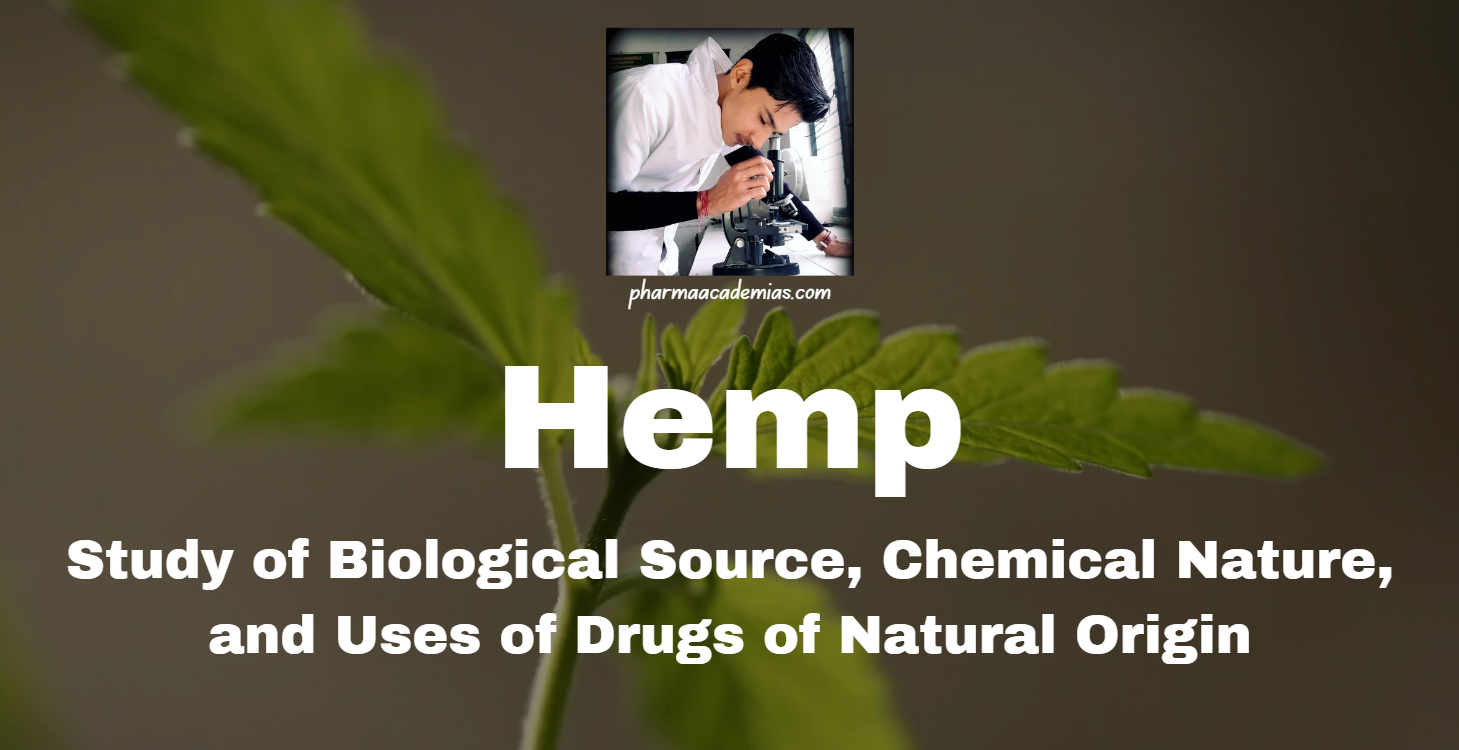Biological Source Hallucinogens are a diverse group of substances that originate from various plant, fungal, and animal sources. Some notable examples include: 1. Psilocybin Mushrooms: – Species: Psilocybe cubensis, Psilocybe semilanceata – Family: Hymenogastraceae 2. Peyote Cactus: – Species: Lophophora williamsii – Family: Cactaceae 3. Ayahuasca: …
Hemp: Study of Biological Source, Chemical Nature, and Uses of Drugs of Natural Origin
Biological Source Scientific Name: Cannabis sativa L. Family: Cannabaceae Part Used: The bast fibers obtained from the stem of the hemp plant. Chemical Nature Hemp fibers are primarily composed of cellulose, hemicellulose, lignin, and pectin. These components contribute to the mechanical properties and versatility of hemp fibers. Chemical Composition: – …
Jute: Study of Biological Source, Chemical Nature, and Uses of Drugs of Natural Origin:
Biological Source Scientific Name: Corchorus olitorius and Corchorus capsularis Family: Malvaceae (previously classified under Tiliaceae) Part Used: The bast fibers obtained from the stem of the jute plant. Chemical Nature Jute fibers are predominantly composed of cellulose, hemicellulose, and lignin. The unique composition of these components gives jute its characteristic …
Disorders of Sex Hormones: Definition, Types, Causes, Pathophysiology, Symptoms, and Treatment
Definition: Disorders of sex hormones refer to conditions that result from imbalances in the production, regulation, or action of sex hormones (estrogen, progesterone, and testosterone). These imbalances can affect sexual development, reproductive function, and secondary sexual characteristics. Types of Disorders of sex hormones 1. Hypogonadism: Reduced function of the gonads …
Thyroid Diseases: Definition, Types, Causes, Pathophysiology, Symptoms, and Treatment
Definition: Thyroid diseases encompass a variety of disorders that affect the thyroid gland, a butterfly-shaped gland located in the neck that produces hormones regulating metabolism, growth, and development. The primary thyroid hormones are thyroxine (T4) and triiodothyronine (T3). Types of Thyroid diseases 1. Hypothyroidism: A condition where the thyroid gland …
Diabetes: Definition, Types, Causes, Pathophysiology, Symptoms, and Treatment
Diabetes mellitus is a chronic metabolic disorder characterized by high blood glucose levels (hyperglycemia) resulting from defects in insulin secretion, insulin action, or both. It can lead to serious health complications if not properly managed. Types of Diabetes 1. Type 1 Diabetes: An autoimmune condition where the body’s immune system …
Hemophilia: Causes, Types, Symptoms, Diagnosis, Treatment, and Management
Hemophilia is a rare genetic bleeding disorder characterized by the deficiency or dysfunction of clotting factors in the blood, primarily factor VIII (hemophilia A) or factor IX (hemophilia B). This results in prolonged or spontaneous bleeding episodes, which can lead to serious complications. This note explores the causes, types, symptoms, …
Hereditary and Acquired Anemia: Causes, Pathophysiology, Symptoms, Diagnosis, Treatment, and Prevention
Anemia is a condition characterized by a deficiency in the number or quality of red blood cells (RBCs) or hemoglobin, leading to reduced oxygen-carrying capacity of the blood. Anemia can be broadly categorized into hereditary and acquired types, based on its underlying cause. This note explores the causes, pathophysiology, symptoms, …
Thalassemia: Causes, Pathophysiology, Symptoms, Diagnosis, Treatment, and Prevention
A thalassemia is a group of inherited blood disorders characterized by the body’s inability to produce sufficient and functional hemoglobin, resulting in anemia. Hemoglobin, the protein in red blood cells responsible for carrying oxygen, has two main components: alpha and beta globin chains. Thalassemia is categorized based on which globin …










